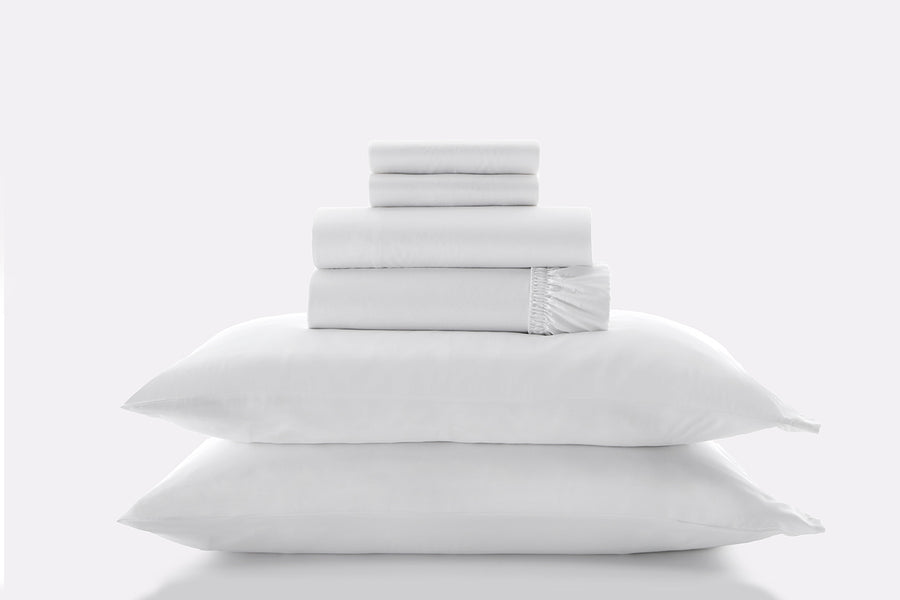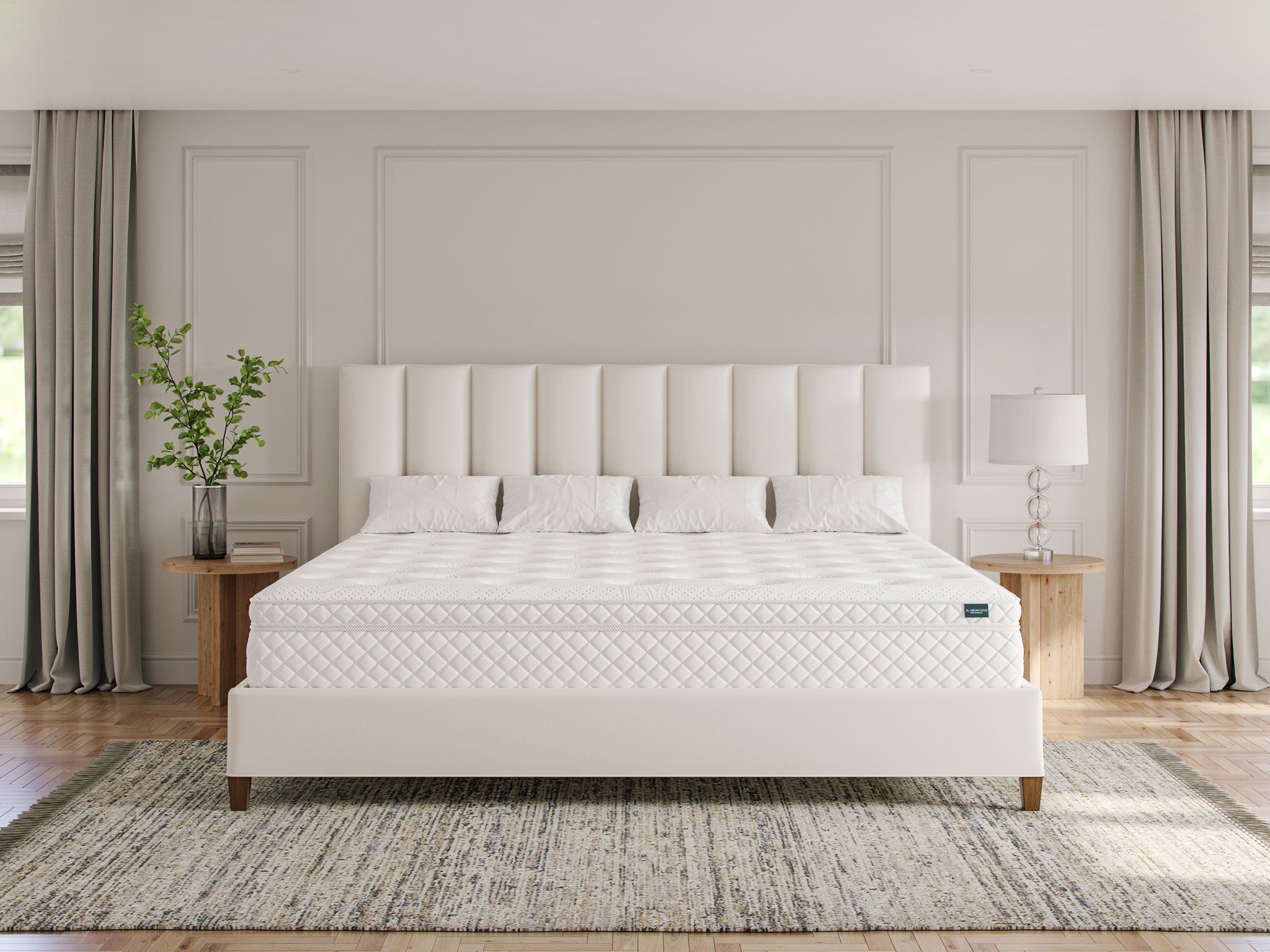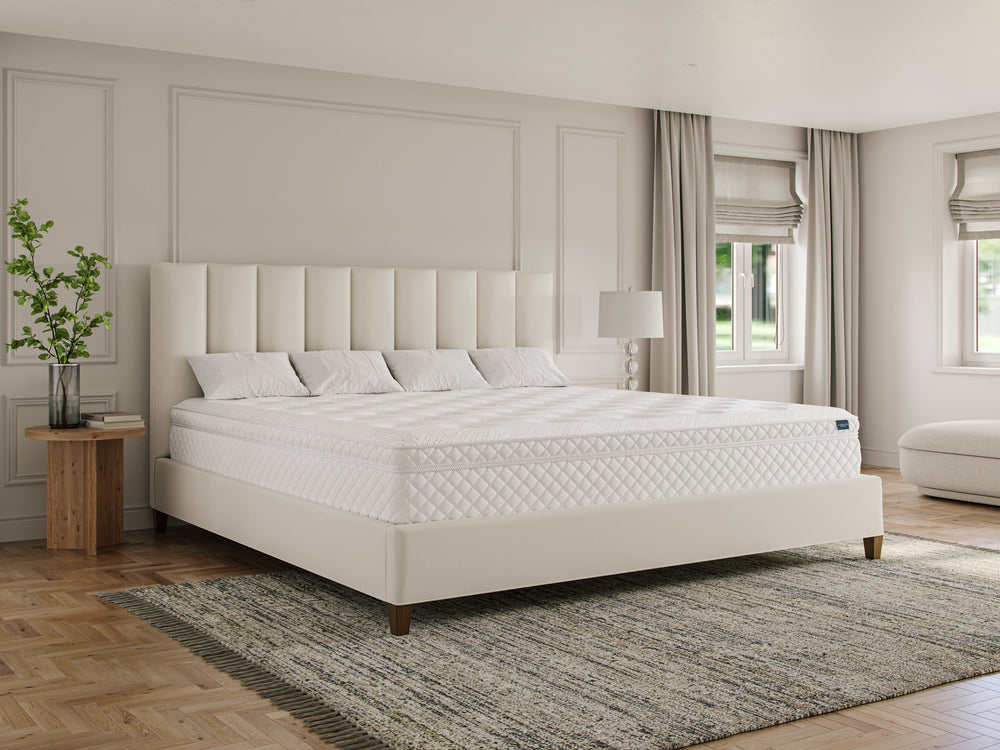The Real Sleep Disruptors You’re Not Thinking About
You go to bed at a reasonable hour, avoid caffeine late in the day, and maybe even wear a sleep mask. So why are you still waking up groggy, stiff, or just plain exhausted?
The truth is, it’s not always about how long you sleep, but what’s happening around you while you sleep. From restless pets to cramped sleeping quarters and a partner’s tossing and turning, subtle disruptors can sabotage your rest without you even realizing it.
In this post, we’ll explore the most common sleep disruptors families face (including the ones no one talks about) and how upgrading to an oversized bed like the Wyoming King can help restore the calm, uninterrupted rest you’ve been missing.
7 Common Sleep Disruptors Hiding in Plain Sight
You already know that scrolling TikTok at midnight isn’t helping you sleep better. However, your phone isn’t the only thing that’s wrecking your sleep quality.
Most people overlook the little things that sabotage their sleep, like a room that’s too warm or a bed that’s just a bit too small for comfort. These small details add up, and they could be the reason you're tossing and turning at night, even if you’re in bed for 8 hours.
Below, we’ll break down seven sneaky sleep disruptors you might not realize are hurting your rest and what you can do about each one.
1. Your Mattress Is Too Small
Ever find yourself clinging to the edge of the bed like it’s the last lifeboat on the Titanic? Or waking up because your partner rolled over and accidentally stole your half of the mattress? A bed that’s too small is a silent sleep disruptor.
When you don’t have enough room to stretch, shift, or find your ideal sleeping position, your body stays tense. That tension builds up, interrupts your sleep cycles, and leaves you feeling groggy the next day.
If your mattress is a tight squeeze, especially if you share it with a partner, child, or pet, it may be time to consider a larger size. Upgrading to a Wyoming King gives you more space to move without bumping into anyone (or falling off the edge). You’ll sleep more deeply, move freely, and wake up without the aches and crankiness.
Before upgrading, measure your room to make sure a larger bed fits comfortably with space to walk around. A general rule of thumb is to leave at least 24–30 inches of clearance on each side.
2. Uncomfortable Bedding or Sheets
You know that feeling when you slip into hotel sheets that are cool, smooth, and perfectly tucked? That’s not just luxury, it’s science-backed comfort.
On the other hand, itchy fabrics, overheating, and bunched-up sheets can leave you tossing, turning, and waking up drenched in sweat. That’s because rough textures or synthetic materials trap heat and irritate the skin. Poorly fitted sheets slide around all night, creating friction and waking you up without you even realizing it.
To avoid this scenario, choose soft, breathable sheets like bamboo or high-quality cotton, especially if you tend to run hot. And for oversized beds like the Wyoming King, always go for custom-fit sheets. They stay snug all night, so you can relax without the midnight wrestling match.
Another great tip is to layer your bedding for year-round comfort. Use a lightweight sheet in summer, then add a duvet or comforter you can kick off easily if needed. And skip the overly tight hospital corners so you don’t feel restricted.
3. Bedroom Temperature and Humidity
Ever wake up in a sweat-soaked tangle of sheets or shivering under a mountain of blankets? Temperature swings can sabotage your sleep more than you think.
Your body needs to cool slightly to enter deep sleep. If your room is too warm or stuffy, your core temperature can’t drop properly, which can lead to fragmented sleep, restlessness, and even weird dreams. Too cold, and your muscles tense up, waking you in the middle of the night.
Humidity also plays a role, as dry air can irritate your throat and skin, while excess moisture creates a clammy, uncomfortable environment.
That’s why you should aim to keep your bedroom around 65°F (18°C) and well-ventilated. Use breathable bedding (hello, bamboo and cotton), a fan, or a smart thermostat to help regulate temperature. If the air is too dry or too damp, try a humidifier or dehumidifier, depending on your climate.
Another good idea is to layer your bedding so you can adjust easily through the night without fully waking up. And consider using blackout curtains to reduce heat from sun exposure during the day.
4. Subtle Noise or Vibration
Not all sleep disruptors are loud and obvious. Sometimes, it’s the low hum of a fridge, the buzz of your phone, or even vibrations from a partner’s late-night trip to the kitchen that can interrupt your rest.
Your brain stays partially alert during sleep, especially in lighter stages. Subtle noises or bed movements can pull you out of those deeper phases without fully waking you. As a result, you spend more time in restless, unproductive sleep.
To combat this, start with the basics – silence your phone, switch off buzzing electronics, and keep it cool and dark. If you live in a noisy area, try white noise machines, sleep sound apps, or even soft foam earplugs to mask disruptions.
If bed movement is the issue, an oversized mattress like the Wyoming King can help isolate motion. You’re far less likely to feel every toss, turn, or midnight snack run when you have room to spread out.
Don’t underestimate the power of a solid XL bed frame. Look for ones with strong center support and minimal shake to cut down on movement transfer.
5. Light Leaks and Poor Lighting Design
That sliver of light from the hallway? The blinking router? The glow of your bathroom nightlight? It all adds up. Even dim, artificial light can interfere with your circadian rhythm and suppress melatonin, making it harder to fall and stay asleep.
But it’s not just about blocking light. Poor lighting design throughout your evening routine can also confuse your internal clock. Bright overhead lights or screen time too close to bedtime can trick your brain into thinking it’s still daytime.
The solution is to use blackout curtains to block outdoor light and eliminate small light sources in the room. In addition, you need to think about your wind-down lighting. Switch to warm, low-light lamps after sunset and consider using dimmable bulbs or amber-colored lighting that mimics candlelight.
To minimize the disturbance from your phone, set it to Night Shift or use blue light filters after 8 PM. Also, cut off screens at least 30 minutes before bed if possible. If you need light at night, go red as red wavelengths have the least impact on melatonin production.
6. Co-Sleeping Chaos: Partners, Kids, and Pets
Sharing a bed can be cozy, but it can also turn your nights into a full-contact sport. From a partner’s midnight tossing to a toddler’s 3 AM kick to the ribs (or your dog hogging the foot of the bed), co-sleeping with others sometimes means sacrificing quality rest.
The more people (or creatures) you share your sleep space with, the more chances for disrupted sleep. And if your bed is too small, every movement feels amplified.
First, get real about your space needs. If you're co-sleeping with kids or pets, a larger mattress like a Wyoming King can create enough distance to reduce disturbances. You’ll each have room to shift without waking everyone else up.
Second, set gentle boundaries where possible. Consider a separate sleep space for pets, or a gradual transition plan for kids if they’re waking you up nightly.
Motion-isolating mattresses and high-quality bedding can help dampen small movements and reduce partner-related disturbances so that everyone gets more restful sleep.
7. Lack of a Consistent Sleep Routine
Your body loves rhythm. When you keep switching up your bedtime, you're throwing off your internal clock every night. That “just one more episode” habit or the weekend sleep-in might feel harmless, but it’s a silent disruptor that makes it harder to fall asleep, stay asleep, and wake up feeling refreshed.
Irregular sleep routines confuse your circadian rhythm, the internal process that tells your body when to wind down and when to wake up. Without consistency, your body never knows what to expect, and that leads to grogginess, restlessness, and even mood swings.
Instead, try setting a consistent bedtime and wake-up time, even on weekends. Give yourself at least 30-60 minutes before bed to wind down with a predictable relaxing routine – dim the lights, read, stretch, or journal. Avoid screens and stimulants late at night, and create cues your brain will start to associate with sleep.
If you’re trying to reset your routine, start by waking up at the same time every day and exposing yourself to natural morning light. That helps anchor your circadian rhythm and makes it easier to feel sleepy at night.
It’s Time to Sleep Like You Mean It
You’re doing your best by eating right, avoiding screens, and sipping chamomile tea. However, if your bed is too small, your sheets bunch up, or your room feels like a sauna, all that effort still ends in restless nights.
The truth is, better sleep starts with a better sleep setup. For families, couples, or anyone tired of sleeping on the edge, upgrading to a Wyoming King mattress is one of the smartest moves you can make.
With more room to stretch, less motion transfer, and the comfort of custom-fitted bedding, it’s like a reset button for your sleep quality.
Don’t settle for just “getting by” at night. Give your body (and your whole family) the space it needs to rest deeply.
Shop Wyoming King mattresses and finally get the sleep you’ve been dreaming of.






